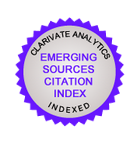Assessing the invasive potential of parthenogenetic marbled crayfish Procambarus virginalis Lyko, 2017 (Decapoda, Astacidea) in the water bolies of the temperate zone of Europe
https://doi.org/10.29235/1561-8323-2024-68-2-129-137
Abstract
The experiment examined the effect of temperature on the parameters of reproduction and growth in female marbled crayfish. At temperatures close to 20 °C, females began to reproduce at 10–11 months with a body weight of 0.84–1.20 g, but up to 80 % of their egg clutches were nonviable. The duration of egg embryogenesis with an increase in temperature from 16–17 to 26–27 °C decreased from 66–69 days to 21–24 days with a lower temperature development threshold equal to 13.1 °C. A similar molting value that determined the growth rate of individuals in juveniles weighing up to 0.34 g was 13–14 °C, but in sexually mature females it decreased to 5 °C. In water bodies of the temperate zone with a short growing season, females were able to reach sexual maturity only in the third summer of life and produced no more than two clutches of eggs during their life cycle. Hence, the invasive potential of marbled crayfish in the temperate zone of Europe is very limited.
About the Authors
A. P. GolubevBelarus
Alexander P. Golubev– D. Sc. (Biology), Associate Professor, Professor of the Department
23/1, Dolgobrodskaya Str., 220070, Minsk
E. A. Ulashchyk
Belarus
Ekaterina A. Ulashchyk– Postgraduate Student
23/1, Dolgobrodskaya Str., 220070, Minsk
O. A. Bodilovskaya
Belarus
Olga A. Bodilovskaya– Ph. D. (Biology), Associate Professor
23/1, Dolgobrodskaya Str., 220070, Minsk
Yu. G. Giginjak
Belarus
Yuri G. Giginjak– Ph. D. (Biology), Associate Professor, Leading Researcher
27, Akademicheskaya Str., 220072, Minsk
References
1. Martin P., Dorn N. J., Kawai T., van der Heiden C., Scholtz G. The enigmatic Marmorkrebs (marbled crayfish) is the parthenogenetic form of Procambarus fallax (Hagen, 1870). Contributions to Zoology, 2010, vol. 79, no. 3, pp. 107–118. https://doi.org/10.1163/18759866-07903003
2. Vogt G., Falckenhayn C., Schrimpf A., Schmid K., Hanna K., Panteleit J., Helm M., Schulz R., Lyko F. The marbled crayfish as a paradigm for saltational speciation by autopolyploidy and parthenogenesis in animals. Biology Open, 2015, vol. 4, no. 11, pp. 1583–1594. https://doi.org/10.1242/bio.014241
3. Kouba A., Petrusek A., Kozák P. Continental-wide distribution of crayfish species in Europe: update and maps. Knowledge and Management of Aquatic Ecosystems, 2014, vol. 413, art. 5. https://doi.org/10.1051/kmae/2014007
4. Andriantsoa R., Tönges S., Panteleit J., Theissinger K., Carneiro V. C., Rasamy J., Lyko F. Ecological plasticity and commercial impact of invasive marbled crayfish populations in Madagascar. BMC Ecology, 2019, vol. 19, art. 8. https://doi.org/10.1186/s12898-019-0224-1
5. Jin Sh., Jacquin L., Huang F., Xiong M., Li R., Lek S., Li W., Liu J., Zhang T. Optimizing reproductive performance and embryonic development of red swamp crayfish Procambarus clarkii by manipulating water temperature. Aquaculture, 2019, vol. 510, pp. 32–42. https://doi.org/10.1016/j.aquaculture.2019.04.066
6. Aydın H., Kamil Dilek M. Effects of different water temperatures on the hatching time and survival rates of the freshwater crayfish Astacus leptodactylus (Esch., 1823) eggs. Turkish Journal of Fisheries and Aquatic Sciences, 2004, vol. 4, pp. 75–79.
7. Novitsky R., Son M. The first records of Marmorkrebs [Procambarus fallax (Hagen, 1870) f. virginalis] (Crustacea, Decapoda, Cambaridae) in Ukraine. Ecologica Montenegrina, 2016, vol. 5, pp. 44–46. https://doi.org/10.37828/em.2016.5.8
8. Shyamal S., Das S., Guruacharya A., Mykles D. L., Durica D. S. Transcriptomic analysis of crustacean molting gland (Y-organ) regulation via the mTOR signaling pathway. Scientific Reports, 2018, vol. 8, art. 7307. https://doi.org/10.1038/s41598-018-25368-x
9. Hargioģly M. M. A comparison of the growth and survival of two freshwater crayfish species, Astacus leptodactylus Eschscholtz and Pacifastacus leniusculus (Dana), under different temperature and density regimes. Aquaculture International, 2009, vol. 17, pp. 31–43. https://doi.org/10.1007/s10499-008-9177-7
10. Seitz R., Vilpoux K., Hopp U., Harzsch S., Maier G. Ontogeny of the Marmorkrebs (marbled crayfish): a parthenogenetic crayfish with unknown origin and phylogenetic position. Journal of Experimental Zoology, 2005, vol. 303, no. 5, pp. 393–405. https://doi.org/10.1002/jez.a.143
11. Кaldre K. Invasive non-indigenous crayfish species as a threat to the noble crayfish (Astacus astacus L.) populations in Estonia. Tallinn, 2018. 124 p.
12. Veselý L., Buřič M., Kouba A. Hardy exotics species in temperate zone: can “warm water” crayfish invaders establish regardless of low temperatures? Scientific Reports, 2015, vol. 5, art. 16340. https://doi.org/10.1038/srep16340
13. Zhukova T. V. [et al.]. Bulletin of the ecological state of lakes Naroch, Myastro, Batorino (2015). Minsk, 2016. 99 p. (in Russian).
14. Lipták В., Mojžičsová M., Gruľa D., Christophoryová J., Jablonski D., Bláha M., Petrusek A., Kouba A. Slovak section of the Danube has its well-established breeding ground of marbled crayfish Procambarus fallax f. virginalis. Knowledge and Management of Aquatic Ecosystems, 2017, vol. 418, art. 40. https://doi.org/10.1051/kmae/2017029
15. Martin P., Shen H., Füllner G., Scholtz G. The first record of the parthenogenetic Marmorkrebs (Decapoda, Astacida, Cambaridae) in the wild in Saxony (Germany) raises the question of its actual threat to European freshwater ecosystems. Aquatic Invasions, 2010, vol. 5, no. 4, pp. 397–403. https://doi.org/10.3391/ai.2010.5.4.09














































